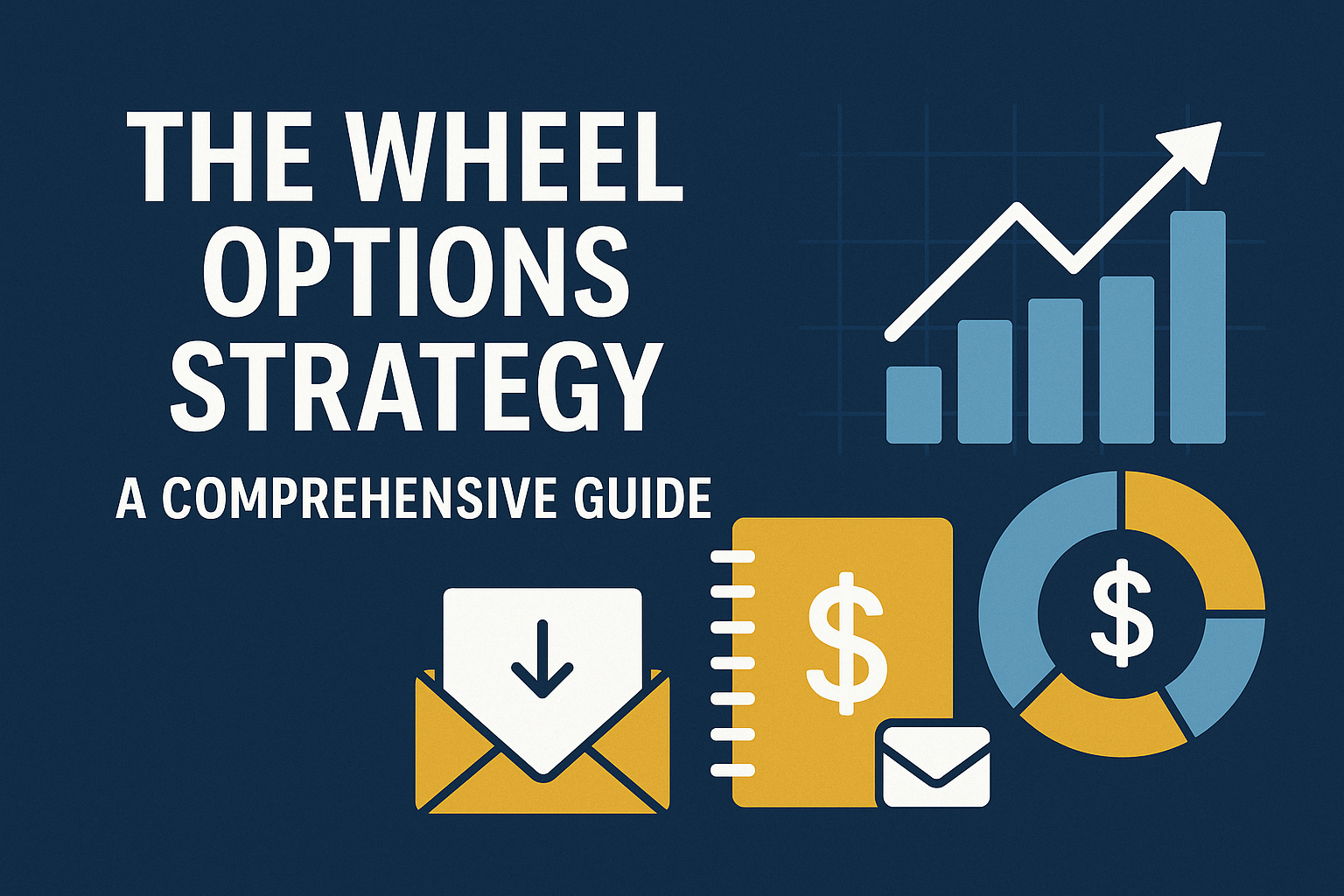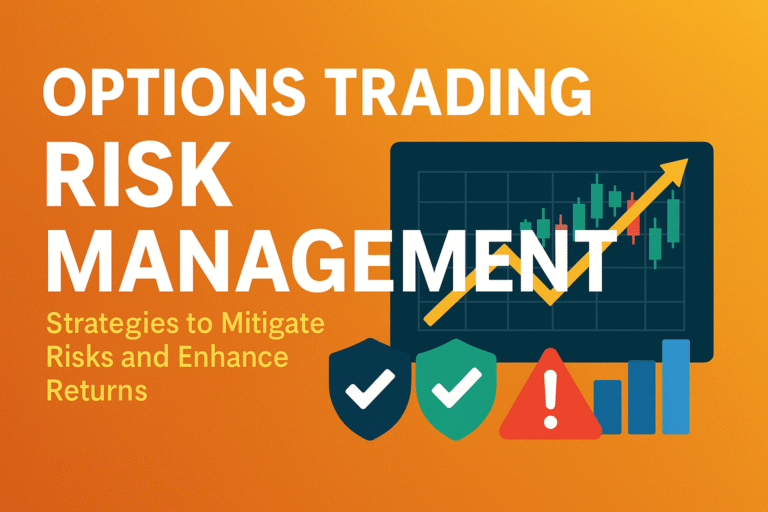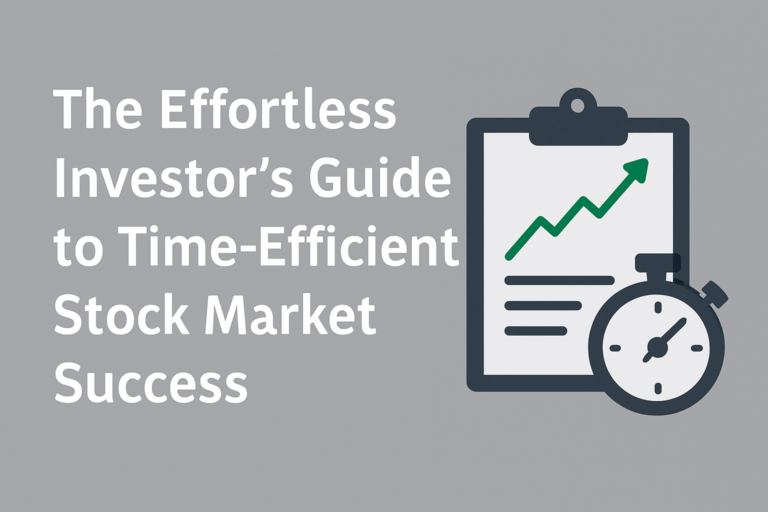Risk Management Strategies for Busy Investors: Protect and Grow Your Wealth

Introduction
Risk Management Strategies for Busy Investors: Protect and Grow Your Wealth in today’s fast-paced world, busy investors need effective strategies to manage risks and ensure their investments grow steadily. This guide explores risk management strategies for busy investors to navigate the complexities of the financial markets.
Busy investors face significant challenges:
- Time constraints limit the ability to actively manage investments due to professional commitments.
- A limited market knowledge can mean inadequate risk assessment.
- Emotional decision-making in volatile markets might lead to poor investment choices.
- There is a danger of overexposure to particular assets without sufficient diversification.
In this guide, you will find indispensable advice designed to assist with portfolio management for time-crunched investors and diversification tips for working professionals.
The Importance of Risk Management for Busy Investors
Why is risk management so crucial for investors?
- It protects investments from major losses during market downturns.
- Facilitates long-term wealth accumulation by balancing risk and reward.
- It helps in preventing emotional reactions, like panic-selling, which could harm financial outcomes.
Busy investors might overlook specific risks such as:
- Overexposure to a single asset class or sector.
- The impact of market volatility on unmonitored portfolios.
- Emotional decisions driven by sudden market changes.
Implementing robust risk management strategies ensures capital preservation, enabling recovery and eventual growth even after downturns (Investopedia – Risk Management, Financial Mentor – Risk Management Plan).
However, due to time constraints, busy investors may overlook risks, leading to potential pitfalls (SmartAsset – Investment Risk Management).
Risk Management Strategies for Busy Investors
Strategy 1: Utilize Automated Investment Tools and Robo-Advisors
Robo-advisors provide great benefits for busy investors:
- Automated portfolio management featuring goal-based investing and diversification.
- Algorithm-driven strategies tailored to individual financial goals and risk tolerance.
- These tools are time-saving, minimizing the need for hands-on management.
Highlighted features of robo-advisors include:
- Automatic rebalancing to maintain desired asset allocation.
- Incurring low fees compared to traditional financial advisory services.
These platforms ensure efficient portfolio management for time-crunched investors (SmartAsset – Investment Risk Management, Sidepocket – Automated Investing Guide, Business Insider – Best Robo-Advisors).
Strategy 2: Implement Set-and-Forget Investment Plans
Set-and-forget investment plans work by:
- Automating recurring contributions to investment accounts.
- Using dollar-cost averaging to regularly invest fixed amounts, reducing the impact of market volatility.
The benefits are significant:
- Promote passive wealth growth over time.
- Help in reducing emotional investing by adhering to a consistent plan.
Regular investment contributions can build wealth without constant oversight (Sidepocket – Automated Investing Guide, Get Together Finance – Buy and Hold Strategy).
Moreover, dollar-cost averaging helps smooth out market fluctuations (SmartAsset – Investment Risk Management, Vocal Media – Investment Strategies).
Strategy 3: Schedule Regular, Brief Portfolio Reviews
Here’s how to conduct efficient portfolio reviews:
- Set quarterly reminders for portfolio check-ins.
- Utilize investment apps that quickly provide portfolio overviews.
Benefits include:
- Keeping investments aligned with long-term goals.
- Efficiently making necessary adjustments.
Periodic reviews prevent deviation from the strategy without needing extensive time commitments (Sidepocket – Automated Investing Guide, Financial Mentor – Risk Management Plan).
Related Reading:
👉 Step-by-Step Options Trading Guide
👉 How to Start Investing with Limited Time
👉 Efficient Stock Trading Strategies
Diversification Tips for Working Professionals
Diversification is critical. It minimizes risk by spreading investments across different assets to mitigate losses if a particular sector underperforms.
Tip 1: Spread Investments Across Various Asset Classes
Include:
- Stocks, bonds, real estate, and commodities.
- Achieve a balance of risk and return by not depending on a single asset class.
Diversification effectively minimizes risk stemming from poor performance in any one sector (SmartAsset – Investment Risk Management, Saxo – Diversification Strategies).
Tip 2: Invest in Index Funds and ETFs for Broad Market Exposure
- Index funds and ETFs provide exposure to diverse securities.
- They are low-cost and demand less active management.
These instruments reduce the necessity for active management (SmartAsset – Investment Risk Management).
Tip 3: Incorporate Geographic Diversification
- Invest in both domestic and international markets.
- Helps mitigate regional risks associated with economic downturns.
Geographic diversification lessens regional risk exposure (Saxo – Diversification Strategies).
Portfolio Management for Time-Crunched Investors
Strategy 1: Adopt Simplified Asset Allocation Strategies
Asset allocation is distributing investments among different categories based on risk tolerance. To simplify:
- A model example could be 60% stocks, 30% bonds, 10% alternative investments.
Simplified asset allocation eases decision-making (SmartAsset – Investment Risk Management, Investopedia – Risk Management).
Strategy 2: Use Automated Rebalancing Features
Rebalancing involves adjusting the portfolio to maintain desired asset allocations. Automation benefits are:
- Saving time and ensuring consistent strategy implementation.
- Prevents portfolio drift from original investment goals.
Automated rebalancing maintains target allocations effortlessly (Sidepocket – Automated Investing Guide, Business Insider – Best Robo-Advisors).
Strategy 3: Focus on Long-Term Investments
Emphasizing long-term strategies involves:
- Investing with a long horizon to reduce the effect of short-term volatility.
The benefits:
- Reduces the need for frequent monitoring and adjustments.
- Minimizes emotional decisions due to market fluctuations.
Long-term investing lowers trading costs and emotional impact (Investopedia – Risk Management).
Long-Term Investing Risk Mitigation for Busy People
Strategy 1: Practice Dollar-Cost Averaging
- Investing a fixed amount regularly regardless of market conditions reduces average cost per share over time.
- This mitigates the impact of market volatility.
Dollar-cost averaging smooths investment volatility (SmartAsset – Investment Risk Management).
Strategy 2: Maintain a Balanced and Diversified Portfolio Aligned with Long-Term Goals
Maintaining balance involves:
- Regularly assessing asset allocations.
- Adjusting investments as life circumstances and goals evolve.
This approach ensures the portfolio remains aligned with risk tolerance and objectives, improving the potential for steady growth (SmartAsset – Investment Risk Management, Saxo – Diversification Strategies).
Strategy 3: Stay Disciplined with Regular Contributions and Avoid Emotional Decisions
Discipline requires:
- Sticking to the investment plan even during market downturns.
- Avoiding panic-selling and emotional reactions.
Such discipline capitalizes on market recovery potential while maintaining consistency in investment strategy (Sidepocket – Automated Investing Guide).
Practical Tools and Resources
Tool 1: Investment Apps and Platforms Offering Hands-off Management
Recommended platforms such as Betterment and Acorns offer:
- Automated deposits promoting consistent investing.
- Goal-based strategies suited to individual objectives.
- Automatic rebalancing maintaining asset allocation.
- Financial reporting for easy tracking of progress.
These platforms provide hands-off management suitable for busy investors (Sidepocket – Automated Investing Guide, Business Insider – Best Robo-Advisors).
Tool 2: Consult with Financial Advisors Specializing in Serving Busy Professionals
Benefits of professional guidance include:
- Receiving personalized strategies that align with specific financial goals.
- Getting expert insights on risk management and diversification.
Choosing an advisor involves examining:
- Their experience with time-constrained investors.
- Reviewing credentials and fee structures.
Financial advisors help tailor strategies that fit the busy investor’s needs (SmartAsset – Investment Risk Management, Investopedia – Risk Management).
Conclusion
To protect and grow investments, effective risk management is vital. Key strategies for busy investors include:
- Utilizing automation and robo-advisors.
- Implementing set-and-forget plans.
- Scheduling brief but regular portfolio reviews.
- Emphasizing diversification and geographically spread assets.
- Simplifying asset allocation and automating rebalancing.
- Focusing on long-term investing and maintaining discipline.
By adopting these risk management strategies for busy investors, you can confidently navigate the investment landscape and achieve your financial goals despite time constraints.
📥 Want a system that saves time and grows wealth?








5 Comments
Comments are closed.